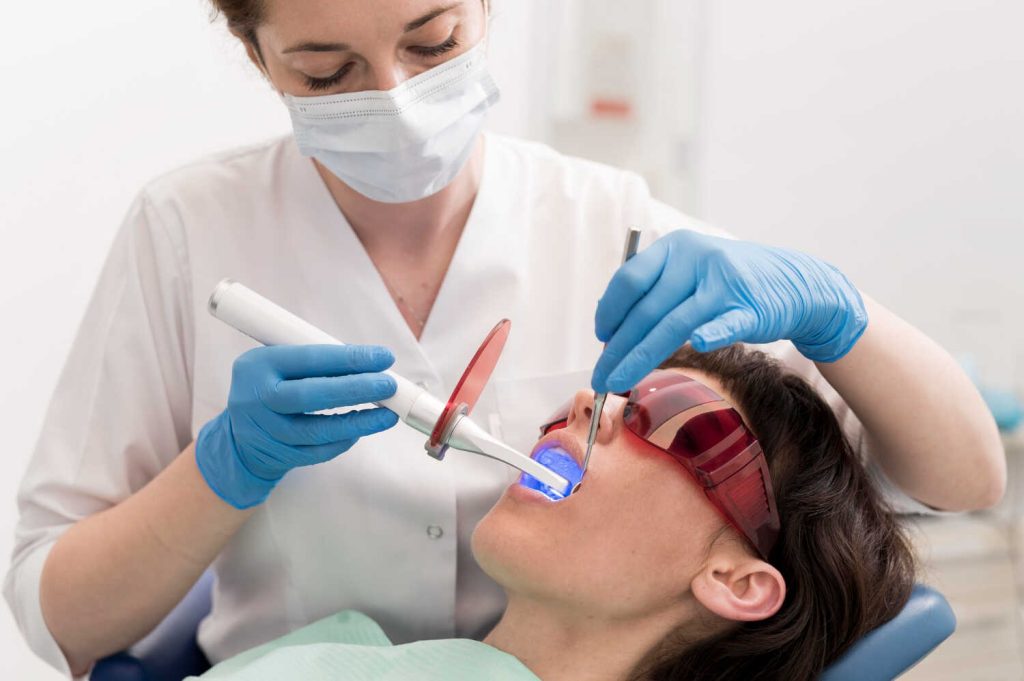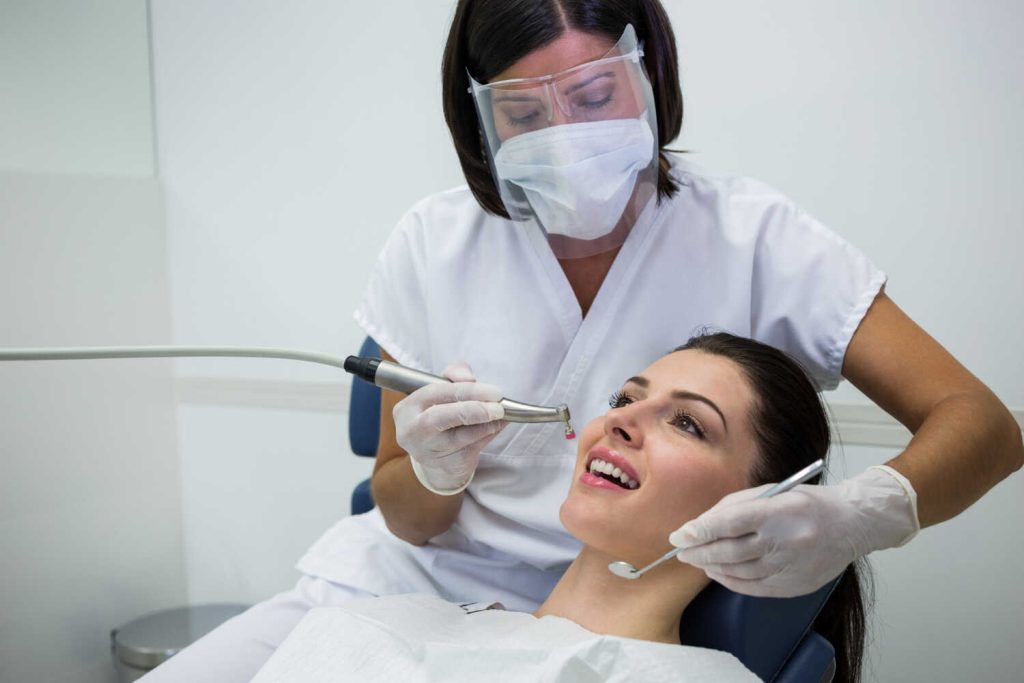
Introduction
Having white, bright teeth can do wonders for your confidence and self-esteem. However, many people experience sensitivity when whitening teeth, making the process uncomfortable. Sensitive teeth are a common side effect of teeth whitening treatments, especially at home. Thankfully, there are ways to manage sensitivity during and after whitening to achieve the bright smile you want. This ultimate guide covers everything you need to know about sensitive teeth and whitening, from why sensitivity occurs to proven tips to minimize discomfort. Read on to learn how to whiten your teeth while keeping sensitivity at bay.
What is Meant by Sensitive Teeth
Sensitive teeth are teeth that experience pain or discomfort in response to stimuli that are typically painless for most people. This hypersensitivity can occur when the enamel on the teeth gets thinner, or gum recession occurs, exposing more of the tooth surface and roots. The most common causes of sensitive teeth include:
- Tooth decay
- Cracked or chipped teeth
- Worn tooth enamel
- Exposed tooth roots due to receding gums
- Tooth grinding or aggressive brushing
When the protective enamel layer wears down, the dentin underneath gets exposed. Dentin contains thousands of microscopic tubules that lead directly to the tooth’s nerve center. Hot, cold, acidic, or sticky foods, brushing, and whitening treatments can stimulate the nerve through these tubules, resulting in sharp pain. The intensity of the pain varies from mild discomfort to a sharp jolt.
Why Teeth Are Sensitive During Teeth Whitening
There are a few reasons why you may experience sensitivity when whitening your teeth:
Chemical Irritation
Many teeth-whitening products contain peroxide-based ingredients such as carbamide peroxide or hydrogen peroxide. These chemicals work by penetrating the enamel and oxidizing deep stains. However, they can irritate the nerve endings in the teeth at the same time. Whitening strips that touch the gums can also cause inflammation and sensitivity to the gums.
Removal of Surface Enamel
The whitening agents chemically etch the enamel surface to penetrate deep stains. This can make the enamel thinner and expose more of the sensitive dentin underneath. Acidic whitening gels can also erode and demineralize enamel over time.
Increased Porosity
As stains get removed during the whitening process, the enamel develops micropores throughout its surface. This makes it more porous and exposes the inner dentin layer to external stimuli.
Dehydration
Whitening products can dry out your tooth enamel and cause it to become dehydrated. This reduces its protective abilities and makes the teeth hypersensitive.
How to Help Sensitive Teeth After Whitening
It’s common for sensitivity to linger for 1-2 days after you finish the teeth whitening treatment. Here are some tips to help sensitive teeth recover faster:
- Use a desensitizing toothpaste containing ingredients like potassium nitrate or stannous fluoride. This helps numb and block pain signals.
- Avoid very hot or cold foods and beverages until sensitivity subsides.
- Drink plenty of plain water to rehydrate the teeth.
- Take over-the-counter pain medication like ibuprofen or naproxen sodium.
- Use tooth sealants to fill micro-pores in the enamel and prevent exposure to stimuli.
- Apply fluoride treatments to strengthen enamel and reduce sensitivity.
- Use a soft-bristled toothbrush and brush gently.
- Sleep with a humidifier to prevent mouth and teeth dehydration.
- Avoid acidic foods and beverages which can aggravate sensitivity.
- Apply topical desensitizing gel or ointment containing benzocaine to numb the teeth.
- Wear a night guard if you grind your teeth to prevent wearing the enamel down.
- Get professional desensitizing treatment from your dentist.
If sensitivity persists beyond 3-4 days or is severe, see your dentist to rule out other dental issues. Consistent, proper oral care and following these tips should help you manage sensitivity during and after whitening treatments.
10 Tips for Dealing with Sensitivity after Teeth Whitening
- Use a Desensitizing Toothpaste – Brush with a toothpaste containing potassium nitrate or stannous fluoride. This helps block sensitivity.
- Avoid Trigger Foods – Steer clear of hot, cold, sweet, acidic, or sticky foods and drinks that can aggravate sensitivity.
- Hydrate Your Mouth – Drink plenty of water and use a humidifier or oral moisturizing gel.
- Take Anti-Inflammatory Medication – Ibuprofen or naproxen sodium can help relieve sensitivity and discomfort.
- Apply Desensitizing Gel – Benzocaine gels numb the teeth and relieve temporary pain.
- Get Fluoride Treatment – Fluoride strengthens enamel and reduces sensitivity.
- Use a Soft Toothbrush – A soft-bristled brush prevents enamel from wearing down. Avoid aggressive brushing.
- Try Teeth Sealing – Dental sealants fill in micro-pores in enamel to shield from stimuli.
- Wear a Night Guard – Prevent grinding and worn enamel by wearing a mouth guard at night.
- Get Professional Help – Consult your dentist if sensitivity persists beyond 3-4 days.
How do you Control Tooth Sensitivity when Whitening?
Here are some practical ways to control and prevent sensitivity during teeth whitening:
- Pretreat with fluoride – Using fluoride toothpaste for a few weeks before whitening remineralizes enamel and reduces sensitivity risk.
- Use lower peroxide concentration – Hydrogen peroxide levels above 10% are more likely to cause sensitivity. Opt for 5-7% instead.
- Apply desensitizing agent before – Use an OTC solution, or your dentist can provide pretreatment to numb teeth.
- Select tray-based whitening – Custom dental trays allow you to control gel contact with teeth and gums.
- Reduce application time – Applying whitening gel for less time reduces enamel etching. Follow manufacturer instructions.
- Whiten less frequently – Spacing out whitening sessions gives teeth time to recover.
- Avoid the tooth roots – Confirm the tray or strips do not overlap and whiten the sensitive root area.
- Moisturize lips and gums – To prevent irritation, keep your mouth hydrated with lip balm and gel.
- Use fluoride rinse after – Rinsing with fluoride restores minerals lost during whitening.
- Take OTC pain medication – For moderate sensitivity, non-steroidal anti-inflammatory drugs provide relief.
What is the Safest Way to Whiten Sensitive Teeth?
If you have naturally sensitive teeth, it’s best to take some precautions for a comfortable whitening experience:
- Use custom trays at a low peroxide concentration of 10% carbamide peroxide or less. This allows you to control the gel placement and limit sensitivity.
- Choose a gradual whitening regimen over 3-4 weeks instead of fast intensive treatments.
- Apply a desensitizing agent before each session. Potassium nitrate gels work well to numb and block sensitivity.
- Reduce contact time to as little as 5-10 minutes per session if you experience discomfort.
- Maintain proper oral hygiene with fluoride toothpaste before and after whitening.
- Apply fluoride rinses after each session to strengthen enamel.
- Stick to longer whitening intervals, like every 2nd or 3rd day. This gives your teeth time to settle down.
- Apply dental sealants on exposed root areas to shield sensitivity.
- Avoid whitening strips as they irritate gums, and you can’t control placement.
Always consult your dentist first to determine the safest whitening approach for your teeth. Stop if you experience severe or prolonged sensitivity.
Is There a Way to Whiten Teeth without Damaging Enamel?
It is possible to whiten teeth without causing long-term enamel damage by following several best practices:
- Use hydrogen peroxide-based whiteners with no concentration of carbamide peroxide higher than 10%. Higher levels increase sensitivity to risk.
- Select products with neutral pH instead of acidic formulas which erode enamel.
- Look for fluoride and potassium nitrate in gels to help strengthen and protect enamel.
- Avoid overuse. Limit whitening to 2 weeks max and 1-2 sessions per year.
- Apply for less time. 10-30 minutes per session is sufficient for gradual whitening.
- Rinse mouth properly after whitening and apply fluoride treatments.
- Apply desensitizing toothpaste before and after to control sensitivity.
- Get custom whitening trays from your dentist for controlled application on teeth only.
- Monitor for sensitivity and discontinue use if enamel feels thin.
- Maintain good oral hygiene before and after with non-abrasive bristle toothbrushes.
With careful use of peroxide whiteners and following safety tips, you can lift stains without permanently damaging the tooth enamel. Consult your dentist if concerned.
What is the Most Powerful Way to Whiten Teeth?
While entirely safe teeth whitening takes time, the most potent professional whitening uses higher peroxide concentrations with in-office procedures:
- In-office bleaching applies 25-40% hydrogen peroxide under the supervision of a dentist. The highest allowed concentration is 40%.
- Stronger peroxide gels are isolated from the gums using adhesives or rubber dams to prevent irritation.
- Clinics use unique curing lights to accelerate and enhance the whitening reaction.
- Patients see results after just 1 hour of intense in-office bleaching. Sensitivity is highest but subsides in a day.
Over-the-counter systems use lower hydrogen peroxide concentrations for home use:
- Whitening strips use 5-7% hydrogen peroxide and take two weeks to see results.
- Custom dental trays allow the application of 10-22% carbamide peroxide for gradual whitening over 2-4 weeks.
- Sensitivity is lower, but you achieve better longevity of results by spreading out the sessions.
Always consult your dentist on the safest whitening method for your teeth. While in-office power bleaching achieves the fastest effect, it carries higher sensitivity risks. Slower home whitening is gentler but takes more applications.
Why Choose Mylifesmiles
Here are some reasons why you should consider Mylifesmiles’ whitening products and services:
- Mylifesmiles uses a moderate 10% concentration of carbamide peroxide to lift stains without excessive sensitivity.
- Our whitening gels have a neutral pH of 7 to prevent enamel erosion and damage.
- Our formula includes potassium nitrate and fluoride for additional desensitizing benefits.
- We offer custom dental trays for the most controlled gel-to-teeth contact during home whitening.
- Dental professionals perfectly fit our trays for your teeth.
- Our team of dentists can advise you on the ideal whitening regimen based on your needs.
- We provide desensitizing gel pretreatments before whitening sessions.
- Our whitening kits include sensitivity relief products like oral moisturizer and desensitizing toothpaste.
- Mylifesmiles has 20+ years of experience in safe, effective teeth whitening protocols.
- We are committed to making your experience as comfortable as possible while delivering dramatic whitening results.
So take control of sensitivity and enjoy long-lasting whitening results with Mylifesmiles!
Conclusion
We all want a bright, beautiful smile, but sensitive teeth can hinder teeth whitening. Understanding what causes sensitivity and following proven ways to minimize discomfort allows you to safely manage sensitivity during and after whitening your teeth. Use a moderate peroxide concentration, maintain excellent oral hygiene, pretreat with desensitizing products, and stick to manufacturer-recommended usage times. After whitening, avoiding certain foods and beverages gives your teeth time to settle down. With some care and planning, you can achieve whiter teeth while keeping sensitivity at bay. Consult a dentist for specific concerns about your tooth sensitivity before undergoing professional whitening. Patience goes a long way in getting your ideal smile while keeping your teeth happy and healthy.




